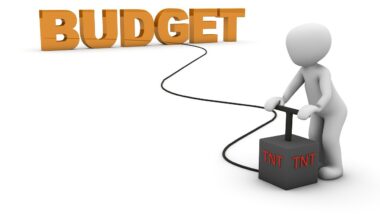Optimizing Website Speed to Enhance SEO Campaign Performance
In the ever-evolving landscape of digital marketing, website speed plays a crucial role in Search Engine Optimization (SEO) campaigns. A swift-loading website not only enhances user experience but also positively impacts search engine rankings. Numerous studies have shown that even a one-second delay in page load time can significantly increase bounce rates, leading to lost potential customers. Search engines, particularly Google, prioritize websites that load quickly, making speed optimization essential for successful SEO strategy. The speed of a website can affect its visibility, engagement, and conversion rates, underscoring the importance of this factor in marketing campaigns. Understanding tools and techniques to optimize speed is vital for marketers aiming to achieve higher organic search rankings and improved user satisfaction. This article discusses essential strategies to enhance website speed and therefore its effectiveness in SEO campaigns. Additionally, we will explore how these strategies can complement existing SEO efforts, ultimately driving more traffic and enhancing performance.
One of the primary steps in optimizing website speed is conducting a thorough performance analysis. Tools like Google PageSpeed Insights, GTmetrix, and WebPageTest provide valuable data regarding loading times and suggest actionable improvements. These tools evaluate various elements, from server response times to image optimization, allowing marketers to identify bottlenecks. Addressing issues highlighted in the analysis can lead to substantial speed raises. Ensuring a fast server response time is critical; users expect web pages to load in under three seconds. Any delay can cause frustration, leading to increased bounce rates. Further recommendations include optimizing images through formats like WebP or compressing files to minimize load times without sacrificing quality. It is essential for digital marketers to keep up with these optimization techniques regularly. A well-maintained and fast-loading website results in higher SEO effectiveness, better user engagement, and improved brand loyalty. Marketers should prioritize speed optimization as an integral aspect of their broader SEO strategies for maximizing online presence.
Another effective way to enhance website speed is through leveraging Content Delivery Networks (CDNs). CDNs distribute your content across multiple servers worldwide, reducing the physical distance between users and the server. This leads to faster access and loading times for global visitors. When a user requests a web page, the CDN locates the nearest server to deliver the content quickly. This model significantly decreases latency and improves the overall experience for visitors. Several reputable CDN providers are available, such as Cloudflare, Amazon CloudFront, and Akamai. Implementing a CDN not only boosts speed but can also enhance website security by protecting against DDoS attacks. Moreover, it aids in absorbing surge traffic, ensuring your website remains stable under heavy loads. As marketers look for ways to improve user experience and SEO effectiveness, incorporating CDN services becomes a practical solution. Ultimately, an informed selection and implementation of CDNs can lead to noticeable improvements in loading speed, thus elevating overall campaign performance.
Minifying Resources and Reducing HTTP Requests
Minifying resources such as HTML, CSS, and JavaScript is another critical strategy for enhancing website speed. Removing unnecessary characters, like whitespaces, comments, and formatting, can significantly reduce file sizes. Smaller files load quicker, thus speeding up performance. Besides minifying files, combining multiple scripts and stylesheets into a single file can drastically decrease the number of HTTP requests. Each request requires a round trip to the server, adding to the total loading time. Reducing these requests accelerates loading, improving user experience and satisfying SEO requirements. Tools like UglifyJS for JavaScript and CSSNano for CSS are excellent for minification. Additionally, marketers should consider asynchronous loading for JavaScript files, allowing the rest of the page to render without delay. This approach has shown to enhance perceived performance, wherein users see content loading quickly despite some scripts still processing in the background. Ultimately, systematically minimising and combining resources is an effective and straightforward way to ensure quicker loading and better overall website performance.
Image optimization is one of the major components in ensuring faster loading web pages. High-resolution images are often responsible for high page sizes, which negatively impacts load times. To counteract this, marketers should leverage formats designed for the web, like JPEGs and PNGs, while also utilizing lossless compression tools. Additionally, lazy loading images ensures that only images within the viewing area load first, allowing for faster initial page rendering. As users scroll down the page, additional images load in the background, minimizing the hassle of long load times. Furthermore, considering responsive image techniques helps deliver the right image size tailored to the user’s screen resolution, conserving bandwidth. Not only does this enhance speed, but it also guarantees an optimized viewing experience across various devices. For this purpose, HTML attributes such as “srcset” are valuable, providing multiple image sources tailored to the user’s display capabilities. By prioritizing image optimization, marketers can ensure their websites not only load quickly but also retain visual appeal, critical for effective SEO strategies.
The Role of Caching
Caching plays an essential role in improving web performance by storing frequently accessed resources locally for quick retrieval. When a user visits a website, their browser can save specific files, allowing for instantaneous access during subsequent visits. Implementing browser caching enables users to load sites faster, requiring less data to be transmitted over the network. Furthermore, server-side caching stores versions of web pages, which can send responses to users without querying the database each time. The benefits are twofold: reduced load times and decreased server load. Popular caching solutions include W3 Total Cache and WP Super Cache for WordPress sites, which optimize caching automatically. These improvements significantly elevate the user experience by ensuring smooth and swift navigation throughout the website. Marketers focusing on SEO campaigns should not overlook the optimization of caching strategies as they lay the groundwork for both speed enhancement and enhanced search engine rankings. Regularly reviewing caching settings ensures that content remains current while still providing the efficiency caching offers.
Lastly, the choice of web hosting provider and plan is vital in defining website speed. Not all hosting services are created equal; suitable hosting translates into rapid performance. Shared hosting, while cost-effective, may lead to slower speeds due to resource sharing with multiple websites. Conversely, dedicated or VPS hosting offers ample resources and is capable of handling traffic spikes effectively. Understanding the specific needs of the website, such as anticipated traffic and resource demands, helps in selecting the best hosting plan. Marketers should always evaluate their current hosting situation periodically, particularly if they notice a decrease in speed or an increase in user complaints. More responsive hosting services can provide tailored solutions that adapt to growing demands. A reliable hosting plan can ultimately set the foundation for effective speed optimization efforts. Coupled with other strategies discussed previously, an appropriate hosting service will enhance SEO campaigns, engage users effectively, and improve rankings across search engines.
In conclusion, optimizing website speed is an indispensable aspect of enhancing SEO campaign performance. A multi-faceted approach, including image optimization, minifying resources, using CDNs, and leveraging caching, allows marketers to significantly improve page loading times. These strategies work synergistically to create a user-friendly environment where visitors can navigate faster and more efficiently. Ultimately, these improvements not only meet user expectations but also align with the algorithmic preferences of search engines. Awareness of these tactics can elevate a marketing campaign’s potential success, fostering higher engagement rates and conversions. Monitoring performance through analytics tools is essential to measure the impact of these changes. Marketers should remain committed to continuous optimization practices, ensuring lasting benefits. By staying current with technology trends and user expectations, website owners possess the power to maintain an edge in competitive digital marketing environments. Embracing speed optimization strategies fosters better user experiences, aids in search rankings, and bolsters overall campaign success. Taking proactive measures promptly will lead to noticeable enhancements in website performance, establishing a solid foundation for future digital marketing achievements.


